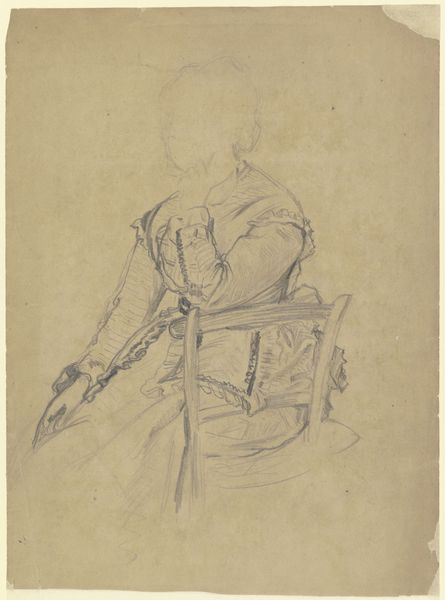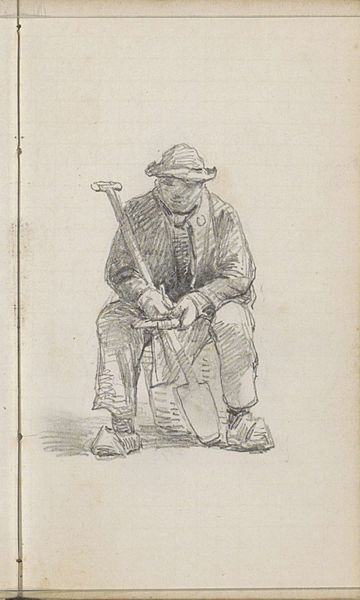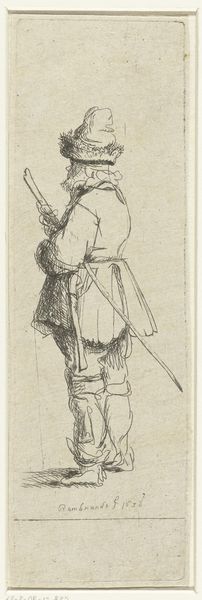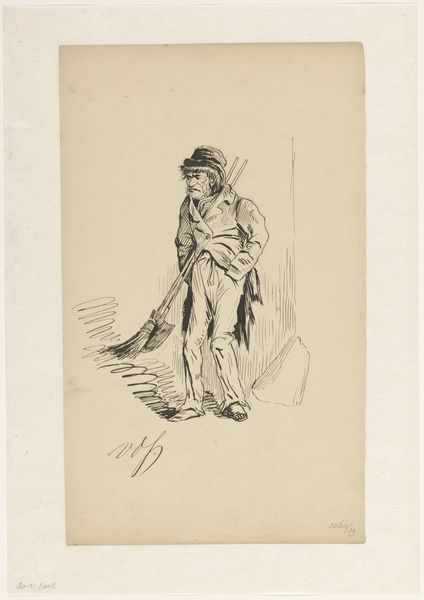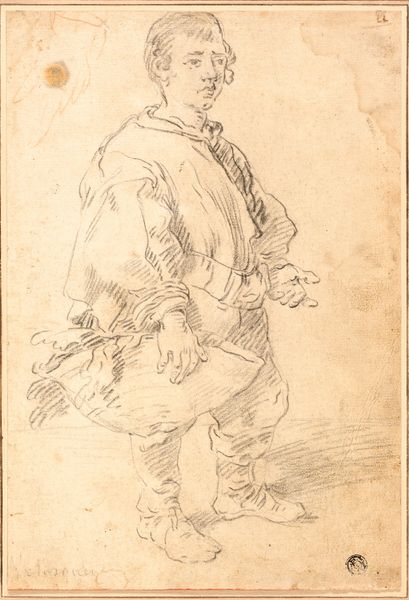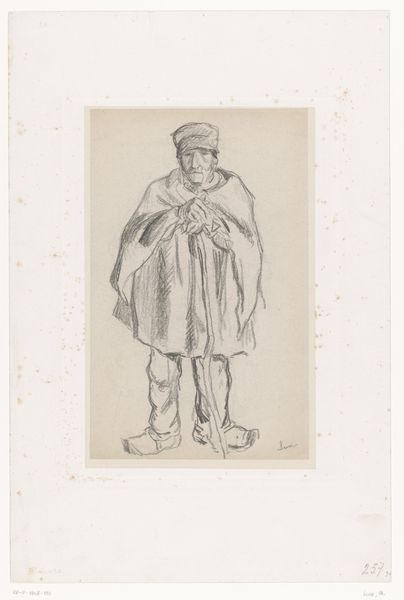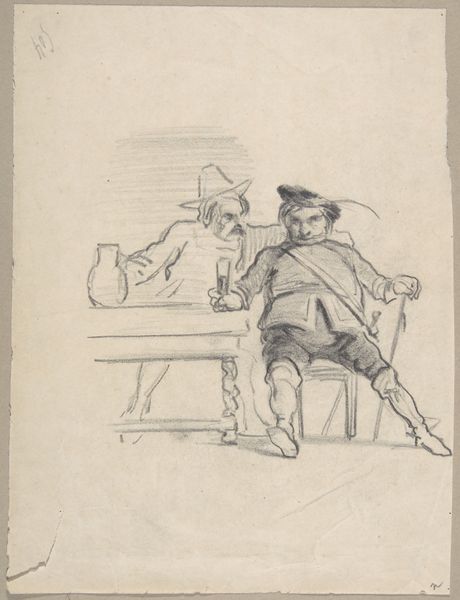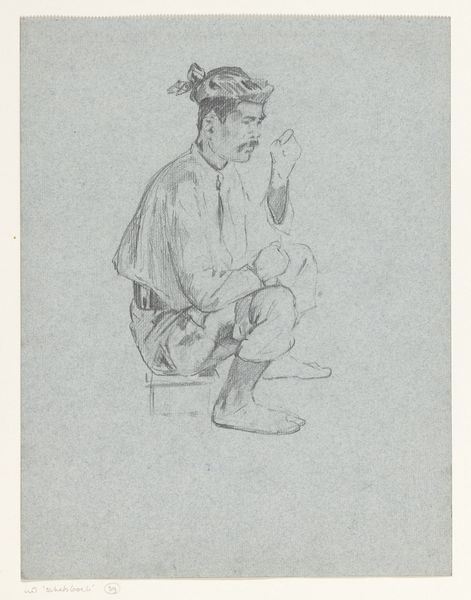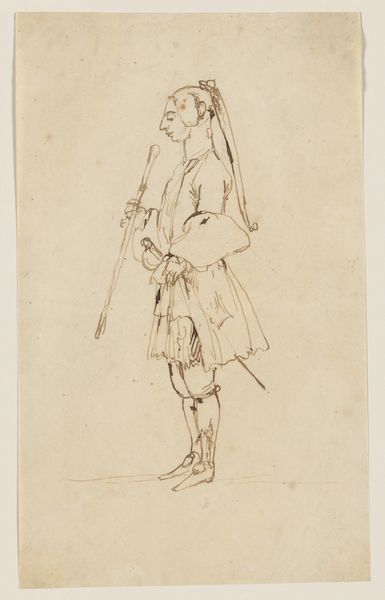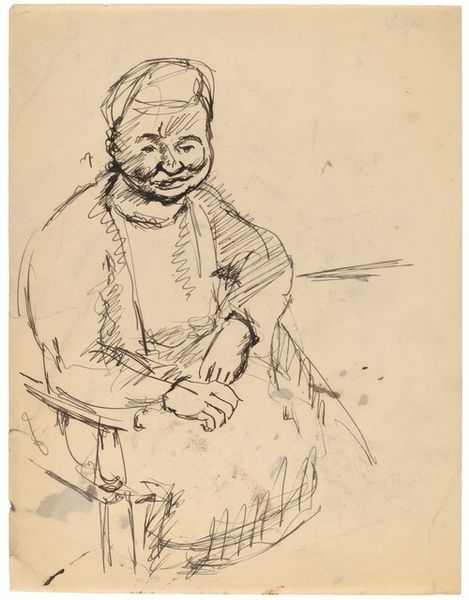
Copyright: Public Domain
Ferdinand Balzer made this drawing of a shepherd’s wife with pen and ink in Germany, around 1896. It’s interesting how Balzer represents this figure. We see the sitter from the torso upwards, holding a pipe and a long staff. The lines are very sketchy, the overall image is simple, and the background is almost non-existent. Why did Balzer chose to represent this woman? Was he trying to depict the realities of rural life? Around the end of the 19th century, Realism and Naturalism were challenging existing social norms by depicting scenes from everyday life, often featuring members of the working class. Artists saw it as their social duty to represent ordinary people and expose the true conditions of their existence. When we look at this image, we can think about the context in which it was produced. Art historians might ask: what was the artist trying to say about social structures? What kind of person was the artist? Where did they study? What was the status of women at the time? Answering these questions helps us understand the values and meanings that are embedded in this seemingly simple image.
Comments
No comments
Be the first to comment and join the conversation on the ultimate creative platform.
